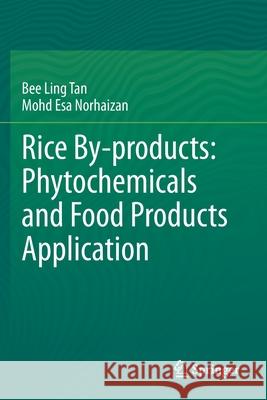Rice By-Products: Phytochemicals and Food Products Application » książka



Rice By-Products: Phytochemicals and Food Products Application
ISBN-13: 9783030461553 / Angielski / Miękka / 2021 / 129 str.
Rice By-Products: Phytochemicals and Food Products Application
ISBN-13: 9783030461553 / Angielski / Miękka / 2021 / 129 str.
(netto: 383,36 VAT: 5%)
Najniższa cena z 30 dni: 385,52
ok. 22 dni roboczych
Dostawa w 2026 r.
Darmowa dostawa!
Table of Contents
1 Introduction and Background 1
References 7
2 Rice demands: A Brief Description 9
2.1 Rice Production 12
References 14
3 Production of Rice By-Products 16
3.1 Rice Processing 18
3.2 Processing Treatments Affect the Phytochemical Contents of Rice 21
3.2.1 Physical Treatment 22
3.2.1.1 Effect of Grinding on Phytochemicals in Rice 22
3.2.1.2 Effect of Thermal Processing on Phytochemicals 24
in Rice
3.2.1.3 Effect of Extrusion on Phytochemicals in Rice 26
3.2.2 Chemical Treatment 29
3.2.2.1 Effect of Germination on Phytochemicals in Rice 29
3.2.2.2 Effects of Fermentation on Phytochemicals in Rice 30
3.3 Rice By-Products 33
3.3.1 Rice Bran 33
3.3.2 Rice Germ 36
3.3.3 Rice Straw 37
3.3.4 Rice Husk 38
3.3.5 Broken Rice 41
3.3.6 Brewers’ Rice 42
References 43
4 Phytonutrients and Antioxidant Properties of Rice By-Products 55
4.1 Vitamin E 56
4.2 Gamma-Oryzanol 65
4.3 γ-aminobutyric Acid 68
4.4 Phytic Acid 71
4.5 Antioxidant Activity and Phenolic Compounds 74
4.6 Other Potential Component in Rice By-Products 81
4.6.1 Dietary Fiber 81
References 84
5 Potential Health Benefits of Rice By-Products 95
5.1 Antiobesity Activity 96
5.2 Chemopreventive Effect 99
5.3 Cholesterol-Lowering Activity 110
5.4 Hypoglycemic Effect 118
5.5 Other Related Health Benefits 123
5.5.1 Neurodegenerative Diseases 123
5.5.2 Osteoporosis 127
5.5.3 Arthritis 130
References 131
6 Application in Food Products 143
References 158
7 Summary and Future Prospects 162
References 167
Conclusion
Dr. Bee Ling Tan is a researcher in the Department of Nutrition and Dietetics, Faculty of Medicine and Health Sciences at the Universiti Putra Malaysia in Serdang, Selangor, Malaysia.
Dr. Mohd Esa Norhaizan is an Associate Professor in the Department of Nutrition and Dietetics, Faculty of Medicine and Health Sciences at the Universiti Putra Malaysia in Serdang, Selangor, Malaysia.
Rice is a vitally important staple food for almost half of the world’s population. As the global population increases, the demands for rice are expected to remain high. Since the rice industry will remain sustainable for a long time, the production of rice by-products will remain high. Substantial evidence suggests that rice by-products such as rice husk, rice straw, broken rice, rice germ, rice bran, and brewers’ rice may possess beneficial effects against oxidative stress and metabolic disorders. These beneficial effects have been linked to the phytochemicals present in rice by-products such as vitamin E, dietary fiber, γ-oryzanol, γ-aminobutyric acid (GABA), and phytosterols.
Despite this evidence, the literature pertaining to rice by-products and its derived components has not well been compiled. To this end, "Rice By-products: Phytochemicals and Food Products Application" provides full coverage of issues pertaining to rice by-products, namely rice demands and rice by-products production, phytonutrients and antioxidant properties of rice by-products, potential health benefits, application in food products, and future prospects. By summarizing all the information in a lucid and comprehensive manner, authors provide a cohesive representation of the literature on the molecular mechanisms involved in the pharmacological effects of the bioactive components that present in rice by-products, as well as plausible means for the prevention of metabolic disorders for readers and allied stakeholders.
1997-2025 DolnySlask.com Agencja Internetowa
KrainaKsiazek.PL - Księgarnia Internetowa









